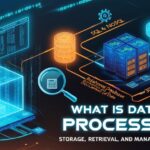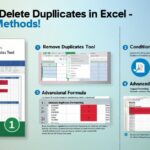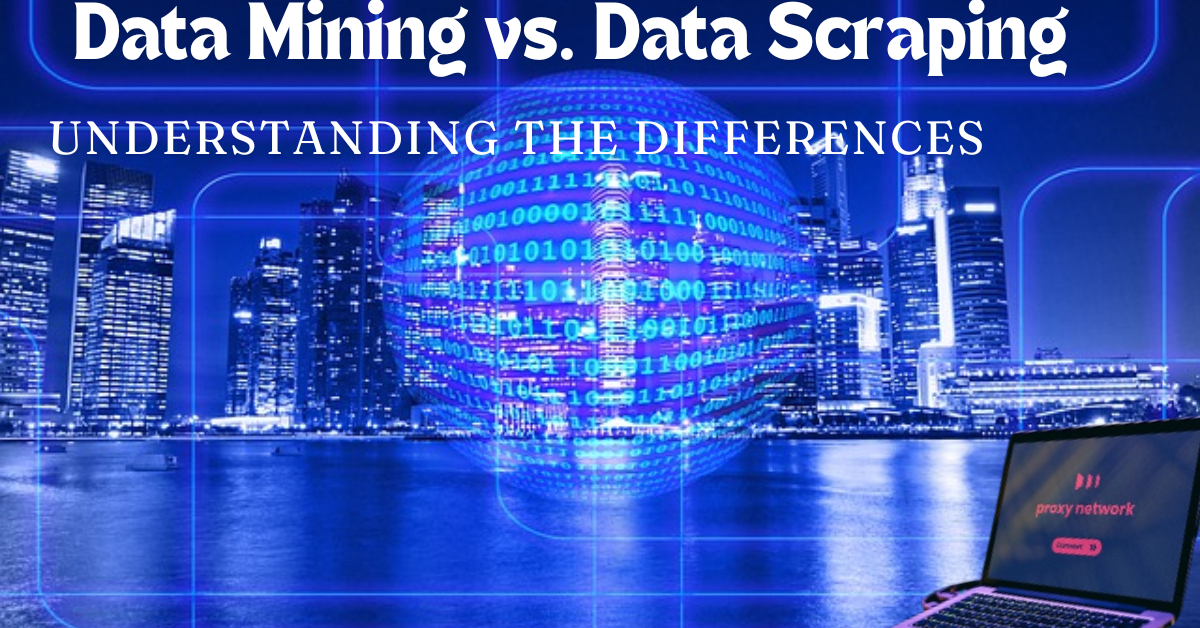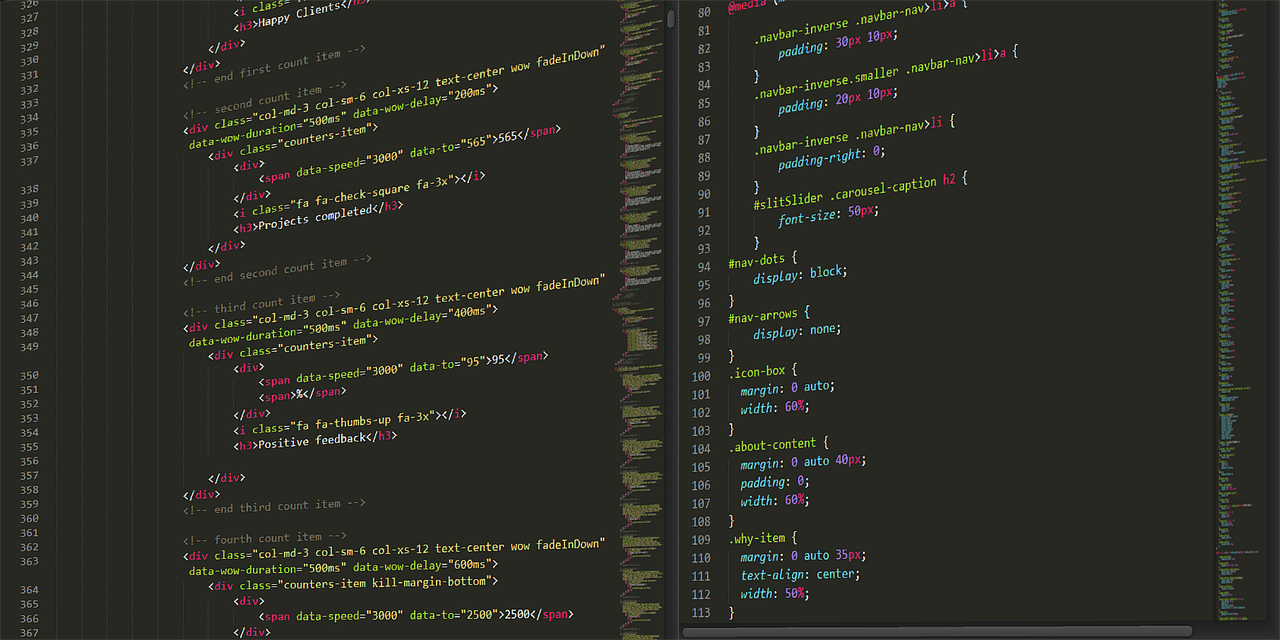In nowadays’s statistics-pushed international, companies and researchers frequently rely upon great amounts of records to make informed selections. Two commonly used techniques to gather and analyze this records are records mining and statistics scraping. While those techniques might seem similar at the beginning glance, they serve specific purposes and involve distinct techniques. This article will explore the variations between facts data mining vs data scraping, supporting you understand which technique is great acceptable on your needs.
What is Data Mining?
Data mining is the manner of coming across patterns, correlations, and developments inside huge datasets. It involves studying existing records from diverse assets to extract beneficial information that could assist in selection-making, forecasting, and strategic making plans. Data mining uses complex algorithms and statistical models to sift through great amounts of information, figuring out patterns and relationships that aren’t right away apparent.
Key Features of Data Mining:
Data Analysis: Data mining specializes in studying information that has already been accumulated and stored in databases, records warehouses, or other repositories.
- Pattern Recognition: The primary aim of records mining is to pick out patterns, tendencies, and correlations within the information.
- Predictive Modeling: Data mining is often used to create predictive models which could forecast future outcomes based totally on historical statistics.
- Tools and Techniques: Popular facts mining tools include R, Python, SAS, and specialized software like IBM SPSS and RapidMiner.
What is Data Scraping?
Data scraping, alternatively, is the technique of extracting specific statistics from web sites or different sources at the internet. It involves robotically collecting information from internet pages the use of bots or scripts, frequently with out the website proprietor’s express permission. Data scraping is typically used to accumulate huge volumes of records speedy and efficiently.
Key Features of Data Scraping:
Web Data Extraction: Data scraping is primarily focused on extracting information from internet pages, together with text, snap shots, and different content material.
- Automated Process: Data scraping tools or bots are used to automate the extraction technique, making it feasible to collect data from multiple assets in a brief length.
- Data Collection: Unlike data mining, which analyzes present statistics, statistics scraping is involved with collecting new data from on line assets.
- Tools and Techniques: Common tools for statistics scraping include Beautiful Soup, Scrapy, and Selenium, which are frequently used with programming languages like Python.
Key Differences Between Data Mining and Data Scraping
While both data mining and data scraping involve working with data, they serve different purposes and utilize distinct methodologies:
- Purpose:
- Data mining aims to analyze and interpret existing data to discover patterns and insights.
- Data scraping focuses on collecting raw data from external sources, primarily the web.
- Methodology:
- Data mining uses advanced algorithms and statistical models to analyze data.
- Data scraping employs bots or scripts to automatically extract information from web pages.
- Output:
- The output of data mining is often in the form of reports, patterns, or predictive models.
- The output of data scraping is raw data, which may require further processing and analysis.
- Use Cases:
- Data mining is commonly used in fields like marketing, finance, healthcare, and retail to make data-driven decisions.
- Data scraping is frequently used for price comparison, market research, content aggregation, and lead generation.
Ethical and Legal Considerations
It’s important to notice that at the same time as records mining is generally considered legal and moral when achieved with right consent, data scraping can boost ethical and criminal concerns. Most websites have terms of provider that prohibit scraping in an unauthorized manner and such action if done attracts criminal charges. Thus, it is crucial to be sure that information scraping is defined and carried out in an accordance with legal requirements.
Read also: Best Coding Practices: A Comprehensive Guide
Conclusion
In precis, records mining and information scraping are powerful equipment for operating with statistics, however they serve unique purposes. Data mining is good for reading big datasets to discover hidden styles and insights, while statistics scraping is satisfactory proper for gathering uncooked facts from online assets. Understanding the variations between these strategies will assist you pick the proper method in your precise needs.
FAQs: Data Mining vs. Data Scraping
What is the number one difference between records mining and records scraping?
Data mining entails reading current information to discover styles and insights, while statistics scraping is the process of gathering raw records from external resources, generally the web.
Can information scraping be used for statistics mining?
Yes, records scraping may be used to collect facts that is later analyzed thru statistics mining strategies. However, they may be awesome methods: scraping gathers the statistics, and mining analyzes it.
Is statistics scraping legal?
Data scraping can increase felony and ethical issues, specially if it involves extracting records without the website proprietor’s permission. Always ensure compliance with a website’s terms of provider and relevant laws.
What gear are usually used for information mining?
Popular equipment for records mining encompass R, Python, SAS, IBM SPSS, and RapidMiner. These gear help in studying massive datasets and coming across patterns.
What are some commonplace gear for statistics scraping?
Common gear for information scraping encompass Beautiful Soup, Scrapy, and Selenium, regularly used with programming languages like Python to automate the extraction of records from web sites.
How is data mining used in enterprise?
Data mining is implemented in numerous business enterprise applications: purchaser segmentation, fraud detection, market basket analysis, and predictive modeling, which allow companies to make info push within the proper direction.
What industries gain the maximum from records mining?
Industries like finance, healthcare, retail, advertising, and telecommunications gain significantly from facts mining, as it enables them recognize patron conduct, manipulate chance, and optimize operations.
Can data scraping harm web sites?
Excessive or unauthorized records scraping can overwhelm a website’s servers, leading to gradual performance or maybe downtime. Always exercise accountable scraping and adhere to moral hints.
Do I need programming competencies to perform information mining or facts scraping?
Basic programming talents are beneficial for both statistics mining and records scraping. For statistics mining, understanding of statistical programming (e.G., R or Python) is beneficial. For facts scraping, familiarity with net scraping libraries (e.G., Beautiful Soup or Scrapy) is beneficial.
Read More: Concentric Advisors Interview Questions: A Comprehensive Guide
What ought to I remember earlier than starting a statistics scraping project?
Before starting a information scraping mission, bear in mind the criminal implications, moral concerns, and the internet site’s phrases of carrier. Additionally, make sure that the information amassed will be used responsibly and complies with records safety policies.
How does statistics mining assist in predictive modeling?
The analytical method of data mining can be useful in predictive modelling through studying historical data to comprehend patterns and trends already started, and then use them to forecast subsequent behaviour, or buying trends, of customers for instance.
What are the moral concerns in statistics mining?
Ethical considerations in statistics mining consist of ensuring facts privateness, obtaining consent for data usage, and heading off biases in facts analysis that might result in unfair or discriminatory outcomes.
Can data scraping be automated?
Yes, records scraping is often automatic using bots or scripts that could extract statistics from a couple of assets fast and efficaciously.
What are some actual-world examples of information mining?
Real-world examples of information mining include credit score scoring in finance, personalised advertising in retail, affected person diagnosis prediction in healthcare, and recommendation structures in e-trade.
How do agencies use statistics scraping for aggressive evaluation?
Companies use information scraping to collect records from competition’ websites, together with pricing, product availability, and patron evaluations, permitting them to make informed decisions and live aggressive inside the market.










